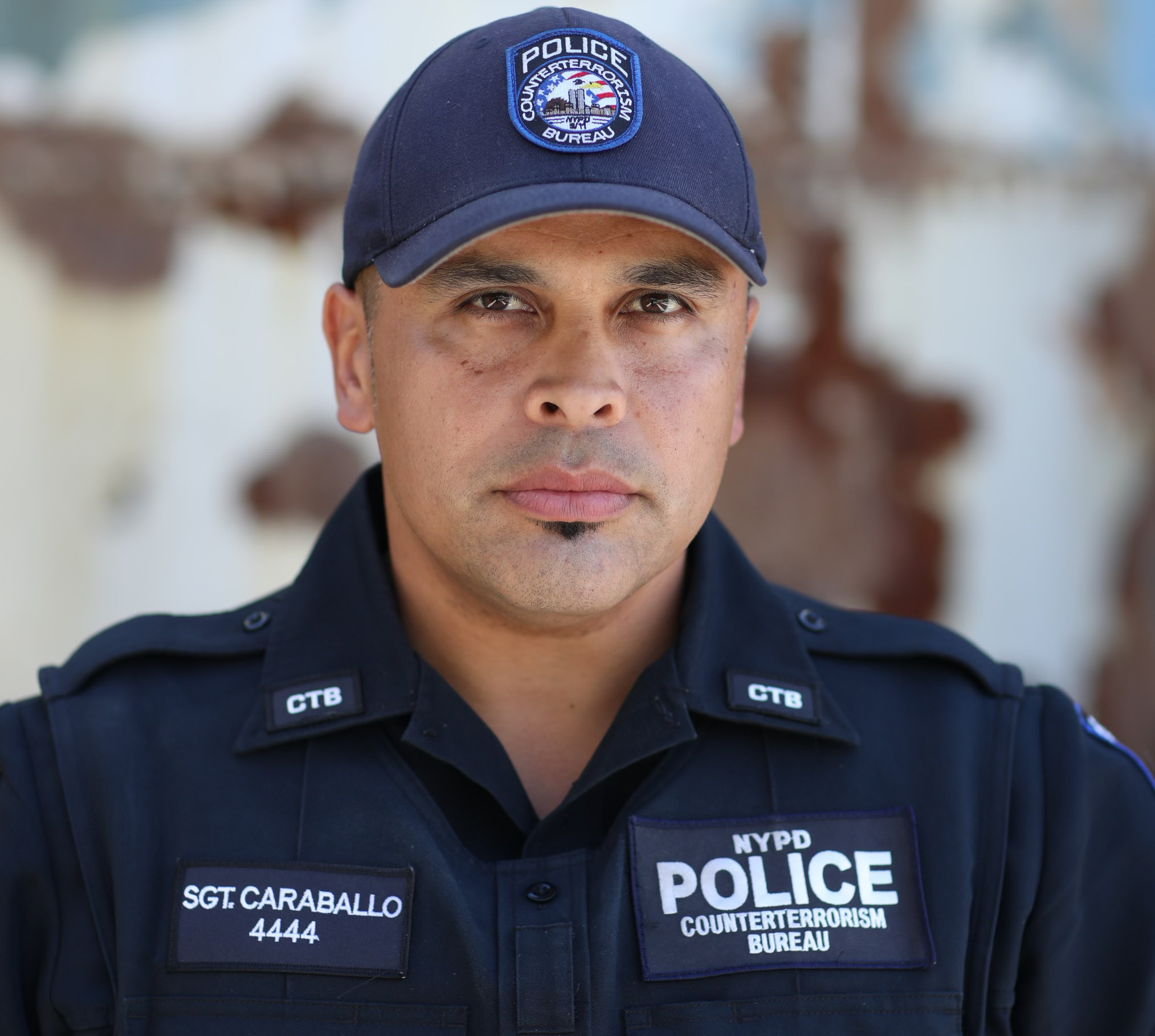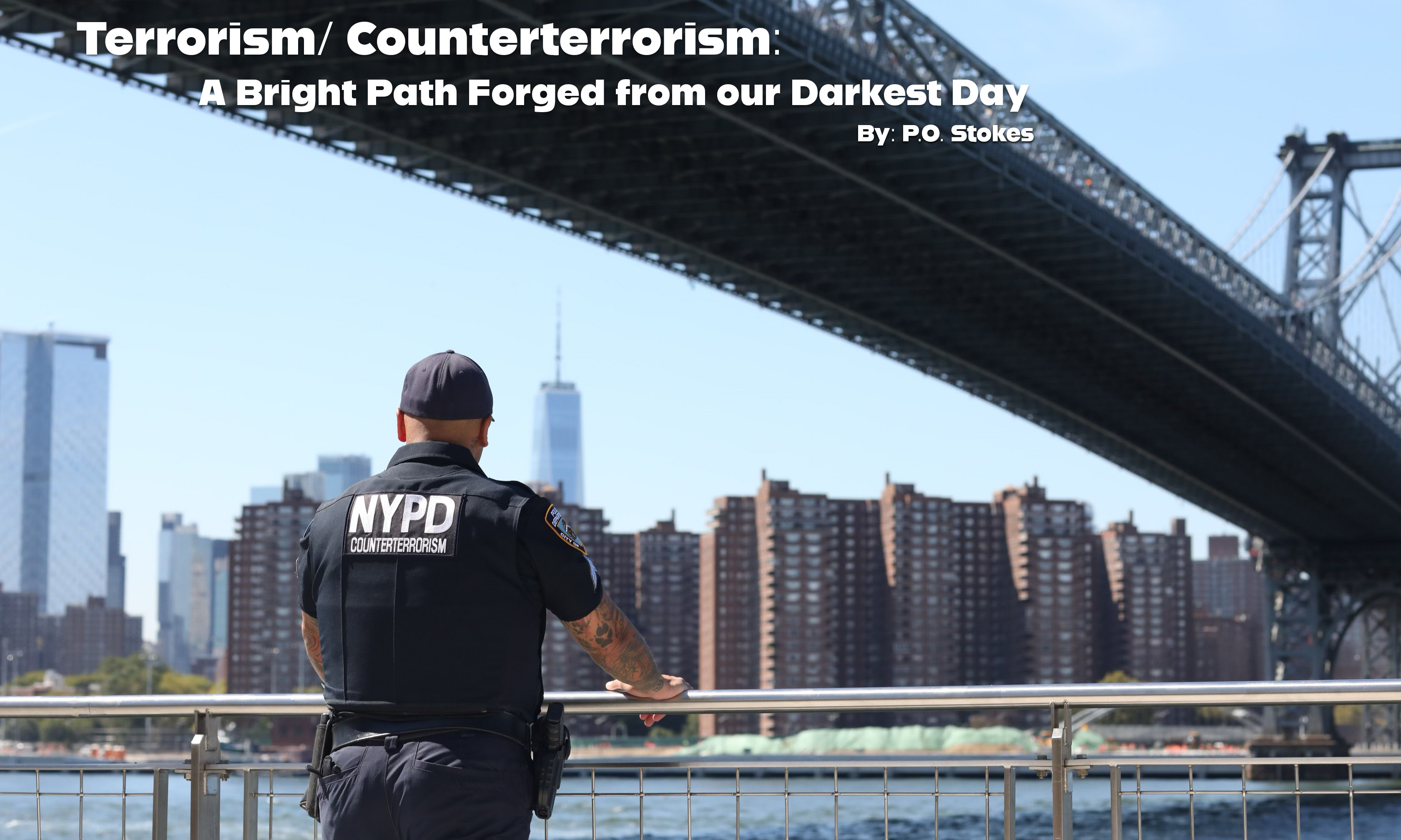Terrorism/ Counterterrorism: A Bright Path Forged from our Darkest Day
October 30, 2024
There is a tradition in Saint Rose of Lima Catholic Academy in Rockaway Beach, Queens that permits students to dress down every Sept. 11th, exchanging their uniforms for regular clothes providing that they wear red, white, and blue. Last year, the fourth-grade teacher asked her students if they knew any first responders who responded to the attacks on the World Trade Center. When nine-year-old Leilani Caraballo asked her dad if he knew anyone, he reminded her that he was a police officer and added, this time, that he was were there that day, and that he was lucky to be alive.
New York City’s mayoral primary election was scheduled for Tuesday, September 11, 2001 and two rookie police officers from the 1st Precinct, then-Officer Jorge Caraballo and his partner, then-Officer Kenny Chan, were assigned to provide security at one of the election sites—Saint Anthony of Padua Church, at the corner of Sullivan Street and West Houston.
The detail promised to be not so different from foot posts Caraballo had been assigned at some of the precinct’s notable locales, which included the New York Stock Exchange, Battery Park, the South Street Seaport, Pier 11, and the World Trade Center.
After arriving at the church and checking in, Caraballo stepped out for a bit of fresh air. A sudden, roaring sound from the sky caused him to look up. He saw a plane flying far too low to the ground and watched, incredulously, as it crashed into the WTC’s North Tower, just a mile or so from where he stood.
He ran into the church, made a brief phone call to his parents—imploring his father to turn on the TV—and grabbed his partner. As they were hurrying downtown he remembers seeing the second plane circle the Statue of Liberty before crashing into the South Tower.
“This can’t be an accident,” he said to Chan. “This is war.”
When they reached the site, they saw flames, smoke billowing from both buildings, and people standing on window ledges, waving clothing, signaling for help. Remembering there was a day care center in the complex, Caraballo moved toward it before being intercepted by a supervisor, also assigned to the 1st Precinct.
“Caraballo! Where are you going?!” Sgt. Drivik yelled. “Do not go into the building!”
After explaining that the day care center had already been evacuated, Drivick ordered Caraballo and Chan to stay where they were and direct pedestrians away from the buildings. “If any civilians try to go past you to try to look for their loved ones, stop them!”
Caraballo recently reached out to the older man he credits for saving his life. Drivick had retired, as a lieutenant, and they hadn’t spoken for a decade. They shared what they remembered from that day.
“It was a very emotional conversation,” Caraballo said.
A few minutes after receiving the sergeant’s order, the ground began to quake, followed by a thunderous roar.
“There was a woman next to me, staring up as the South Tower started coming down. I grabbed a hold of her arm and pulled her to run with me.”
As they ran, they were enveloped by soot, smoke, and ash.
“It was pure chaos and panic. It was pitch black. No one could see anything. I lost sight of my partner. I thought he was dead.”
Determined to find cover, Caraballo located a retail store, smashing open its locked doors with a series of kicks and strikes with his baton. He could feel people grabbing hold of him, tugging at him, knowing only that he was a police officer and that he would help them. He and a dozen or so others fell to the ground inside the store. Covered in ash, coughing, and crying out that they could not breathe, the rookie officer tried to reassure them they would be alright. A few minutes later, the North Tower collapsed.
Eventually, Caraballo would make his way back to the 1st Precinct where he was reunited with Chan and the rest of his colleagues. After regrouping, the 1st Precinct cops went back out to conduct search and rescue missions.
For many days thereafter, they would work recovery missions on the piles, or attempt to identify victims at temporary morgues, or secure the site’s perimeters. If Caraballo worked for less than 15 hours in a day, or had a single day off between then and March, he could not remember it.

In October 2007, Caraballo was promoted to sergeant and assigned to the 94th Precinct. In 2013, he joined the police department’s newly-created Counterterrorism Officer (CTO) program. Designed to equip uniformed personnel assigned to the Patrol Services Bureau with advanced counterterrorism capabilities, CTO members are trained in homemade explosives, drone awareness, suicide bombing awareness, radiation detection, and high-profile site protection. By 2019, Caraballo was assigned to the Brooklyn North Counterterrorism Unit as Borough Counterterrorism Coordinator. From 2020 to 2021, he was designated the unit’s acting commanding officer.
“I almost lost my life to terrorists,” he said. “I wanted to join a unit that would go after them and prevent them from doing further harm to innocent people.”
In July of this year, Caraballo was promoted to sergeant special assignment.
After dedicating over a decade of his career to counterterrorism, surpassing retirement eligibility, and perhaps prompted by the conversation with his daughter, Caraballo decided to write down his experiences from that tragic day. The two-page document had no title and was simply dated September 11, 2023. He gave it to his daughter who delivered it to school. Her teacher read it to the class. The students wrote him thank you cards and called him a hero.
He was moved by the cards, but demurred in response to the compliment—“There are plenty of other people with stories like mine.”
Twenty-three members of the service were killed on 9/11. Exposed to toxic material during recovery efforts, nearly four-hundred have died since. Each year, more names are embossed onto bronze plaques that are added to the NYPD’s Hall of Heroes in One Police Plaza.
For nearly two decades, Caraballo has coped with asthma, chronic rhinitis, and sinusitis. The respiratory illnesses have not hindered him from familial responsibilities, career achievement, or playing softball and basketball with local kids in the Police Athletic League.
Every year, he attends a Brooklyn North memorial mass at Our Lady of Mount Carmel in Williamsburg. Every year, he makes sure to visit Memorial Plaza, where the twin towers once stood, usually alone. After every police academy class graduates, he speaks to those assigned to the borough where he has worked for the better part of his career. Most of them were children on 9/11, or perhaps not even born.
He instructs the new police officers on working details at critical infrastructure points—water treatment plants, electrical grids, bridges and tunnels; and at high-profile locations and events— places of worship, the waterfront on July 4th, New Year’s Eve, and the route of the New York City marathon. He also imparts personal words of advice—that there are some things that you can’t prepare for.
On the day of the worst terrorist attacks in American history, then-Officer Jorge Caraballo was twenty-three years old.
“I was right out of the academy when I was on the bucket brigade, looking for signs of life.”





